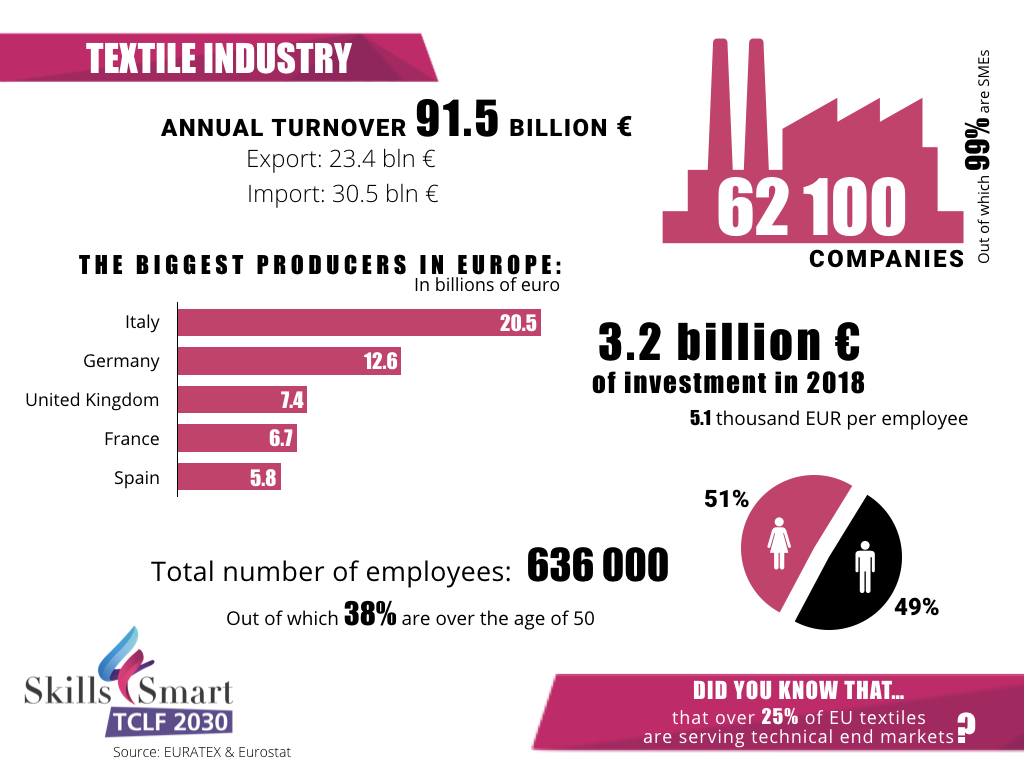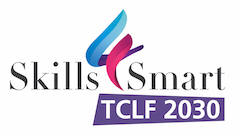The mix of heritage and innovation
The European textile industry along with the clothing industry plays an important role both among the manufacturing industries, but also as a representative of the European cultural heritage, creativity, and innovation. The industry, although often perceived as a traditional sector, in recent decades made important strides in terms of product innovation as well as highly technologically advanced and more sustainable production processes. Textiles are the main input for the clothing industry. Beyond that, they provide many innovative solutions to facilitate the everyday life of European citizens for home and household furnishing and enable the functionality of many technical applications in the transport, construction, energy, agriculture, healthcare, sports, and personal protection markets.
Position in the global market
The industry in last decade noted steady growth in terms of the value of production and trade exchange. The textile industry in 2018 realised over 90 billion EUR of turnover, with exports reaching 23 billion EUR. The European industry is the second biggest exporter of textile products in the world, after China, representing 23% share of the global market. The biggest national producers in terms of production value are Italy, Germany, United Kingdom, France and Spain which are together responsible for 68% of total production value.
The textile industry in Europe
The textile industry in Europe covers a wide range of products and processes such as spinning, weaving, and finishing of textiles, manufacture of knitted and crocheted fabrics followed by the production of carpets, ropes, nettings, but also industrial and technical textiles. The last category today represents 25% of the total turnover of the sector. This broad use of the product indicates that although the clothing industry is still the biggest customer of the textile sector it’s not the only destination of produced goods and components.
The sector employs in total of 636,000 workers across Europe in 62,100 companies, out of which 99% are small and medium-sized companies. The biggest EU countries in terms of employment are Italy, Germany and United Kingdom – followed by Poland and Portugal. Additionally, the textile industry is the most gender-balanced sector out of all TCLF industries, as 51% of workers are women.


